The watering schedule of a poinsettia makes a big difference for plant health and successful growth of your poinsettia throughout the holiday season. Learn how to water a poinsettia, and grow a happy healthy plant.

A few years ago I was so fortunate to receive an oversized potted poinsettia as a Christmas gift. I was excited to grow this beautiful poinsettia for the holidays.
The plant was large and attractive, and the colorful leaves made a festive statement by it's sheer size alone.
I'm quite sure there were a few plants potted together in one pot to make that one fabulous display.
The poinsettia plant was so large and spectacular, and seemed so thirsty, that I made sure to give it lots of extra water every few days or so. Little did I know that I was slowly destroying it.
To my dismay, the plant started to drop lots of leaves, and then also stopped absorbing and taking up the water.
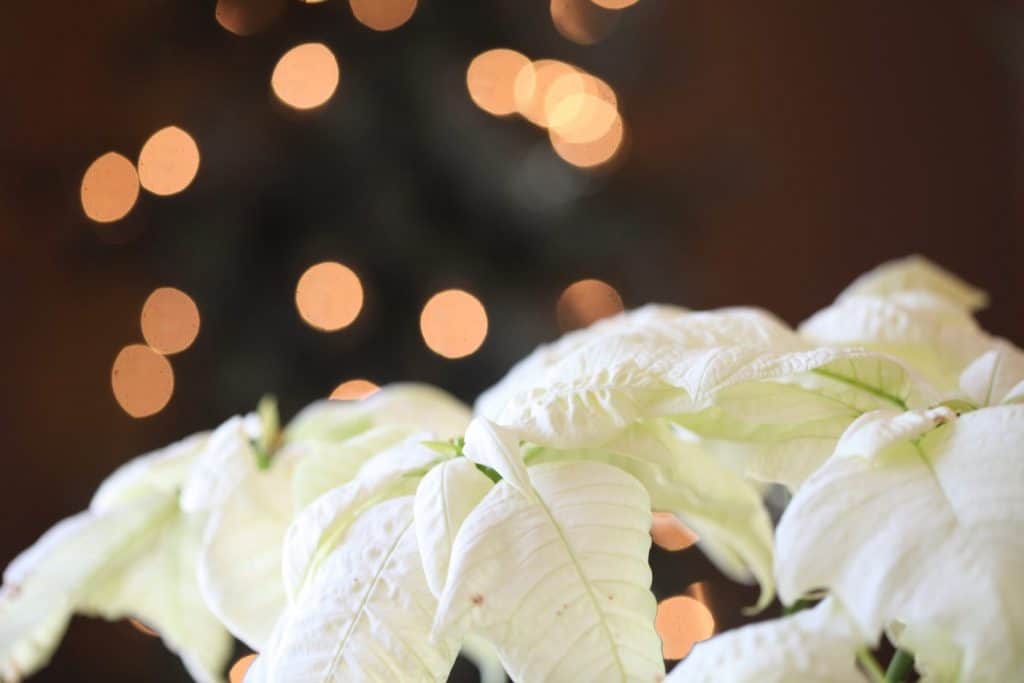
Can You Over Water A Poinsettia?
Through generously watering my poinsettia plant on a regular basis, I had in fact over watered it.
Unfortunately the plant did not survive, and I was unable to bring it back from the brink.
That year I learned a very big lesson in growing poinsettias :
- Do not over water.
It is very easy to care for poinsettias, including watering. The important thing is to do it the right way.
Over watering a poinsettia can cause:
- Leaf discolouration, changing from green or red to yellow
- The leaves to drop from the plant
- Root rot, eliminating the plants ability to take up water and nutrients through the plant roots.
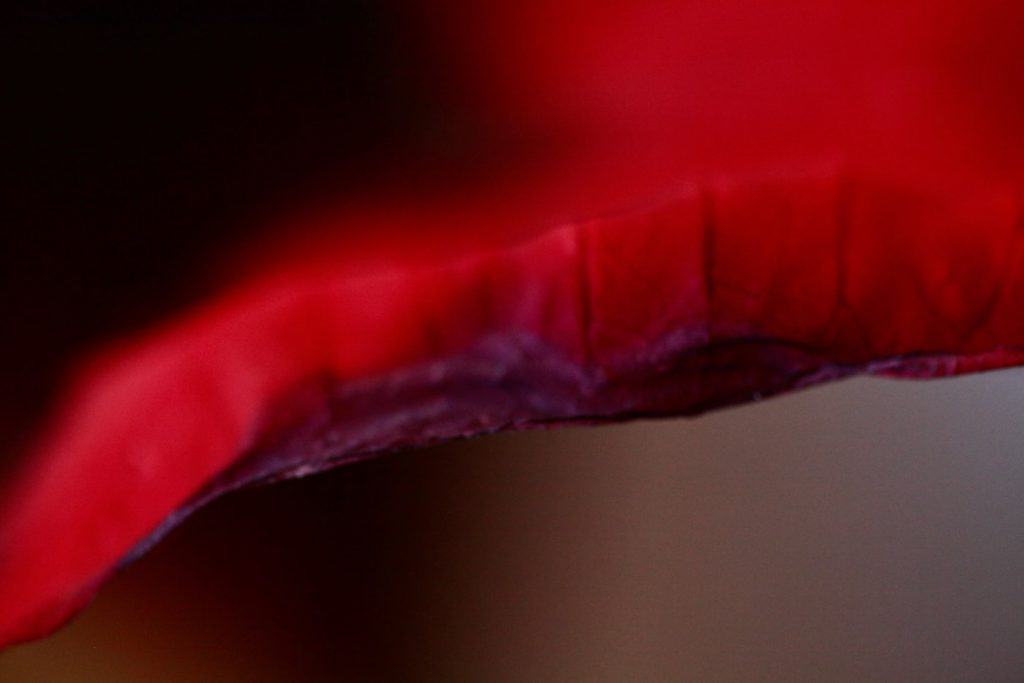
Can You Under Water A Poinsettia?
Under watering a poinsettia will also cause stress for the plant.
Poinsettia plants are vulnerable to stress, and if experiencing under watering or too dry conditions, the plants will demonstrate their stress through symptoms displayed in their leaves and colouring.
Under watering a poinsettia can cause:
- Leaves to discolour and drop prematurely from the plant
- The leaves to wilt
- Dry and scarred leaf edges after recovery
If the poinsettia is displaying wilting, and the soil is dry, this is an indication that the plant is not getting enough water. Give the plant a good watering and allow it some time to take up the water and rehydrate.
The plant should recover when it has been rehydrated.
Once perky again, keep your eye on the plant for when watering is needed again. Keep up with a good watering schedule for the poinsettia plant so as not to expose it to repeated stress from under watering.
You may notice some injury from it's previous wilting, such as leaf drop or dried leaf edges, however it should bounce back and regrow new healthy leaves with proper care.
Learn more about saving a poinsettia plant here.
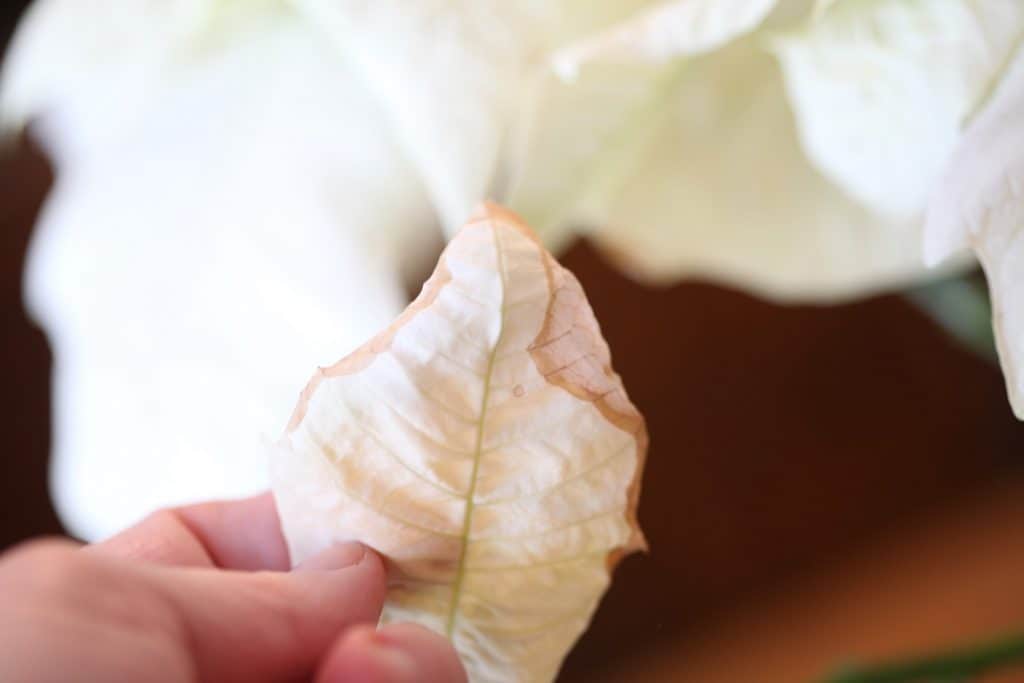
How To Water A Poinsettia
Water a poinsettia with a watering can, or vessel containing water, from the top surface of the potting soil.
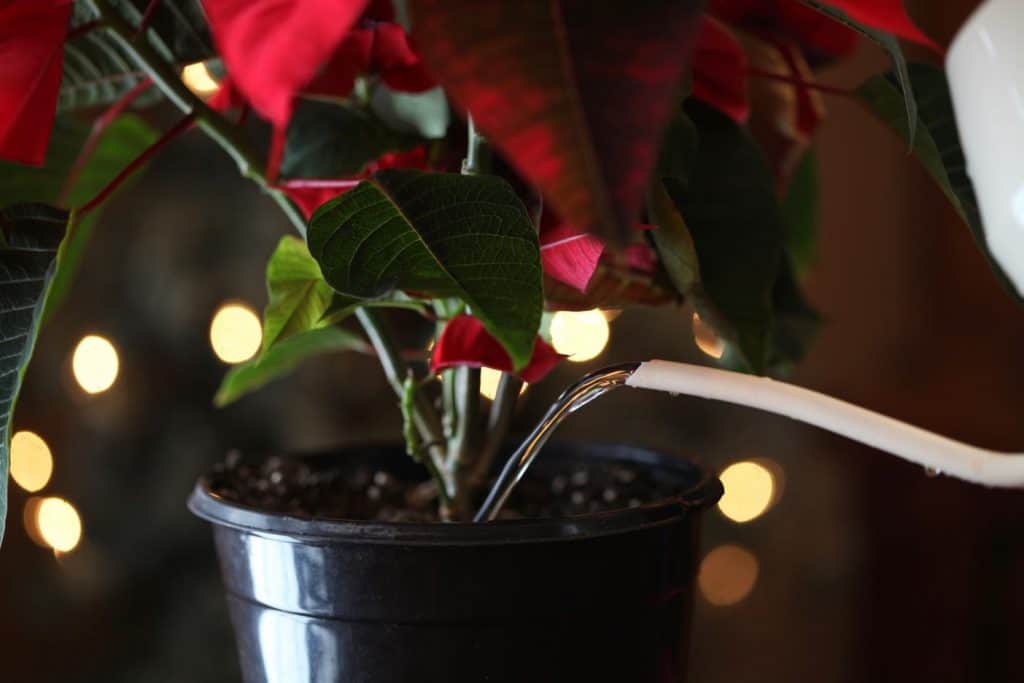
Use room temperature water so as not to shock the plant during the watering process.
Make sure that you place the pot in a container in which to catch the drainage water, as the plant should be watered thoroughly at watering time, and enough to drain freely from the bottom of the pot.
Another easy way to water is to place the whole pot into the kitchen sink for watering. The pot can then freely drain any excess water into the sink.
Water the plant thoroughly, and let the excess water drain completely, until there are no more water drips coming from the bottom of the pot.
Below you will find some tips on:
- How much to water
- How often to water
- Misting Needs, and
- Top or bottom watering

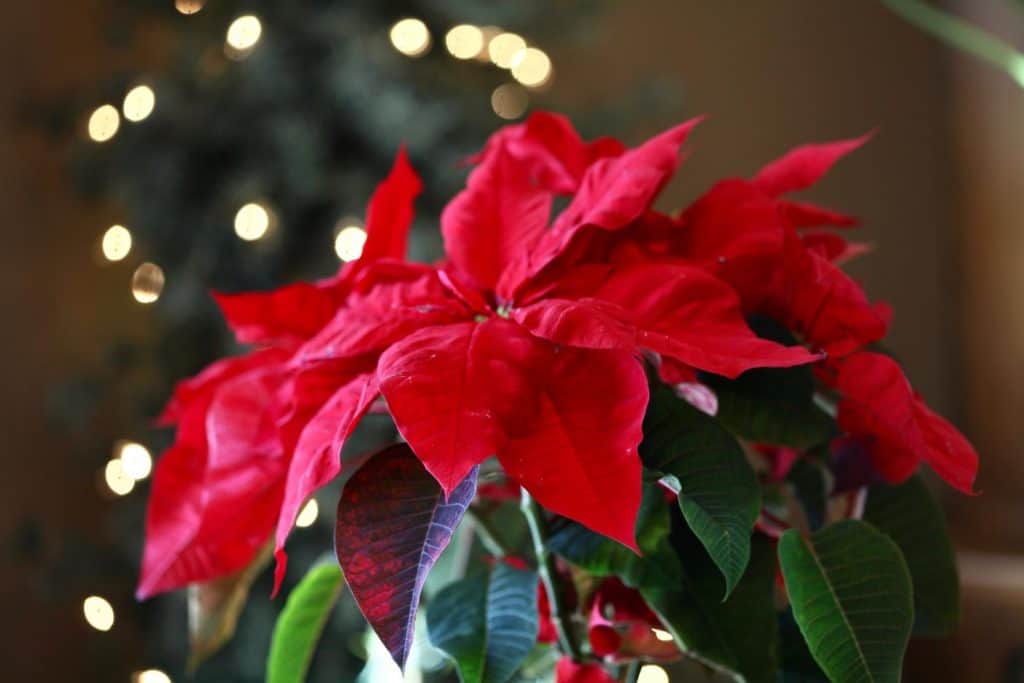
How Much Water Does A Poinsettia Need?
The amount of water a poinsettia needs will be dependent on the amount of water it takes to fully wet the soil in the pot, and cause drainage of water through the other end of the pot.
The poinsettia will guide you as to it's hydration needs, and the amount of water to provide:
- When the soil is dry to the touch at the surface of the soil, it is time to water.
- At this point you can water the plant thoroughly with tepid water, so that the water seeps through the holes at the bottom of the pot.
- Make sure that there are good drainage holes at the bottom of the pot, and that they allow the water to drain freely after watering. If the holes are plugged, make a drainage hole or two.
- Make sure to never allow your poinsettia to sit in the drainage water after watering. This can occur by accident, especially if the plant pot is wrapped in some type of protective foil.
- Always remove the plant pot from the foil before watering, and allow to completely drain if reapplying the foil pot cover.
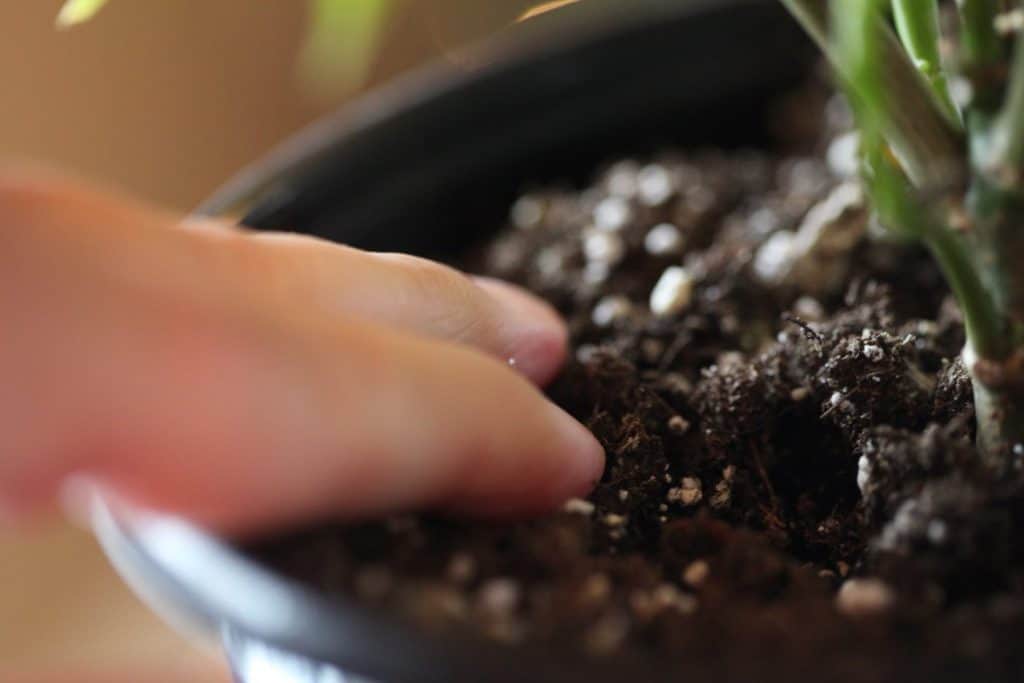
How Often Do You Water A Potted Poinsettia?
A poinsettia watering schedule will be dependent on a number of factors, such as the size of the plant, the size of the pot, and the type of growing medium or potting mix. Allow the soil to dry out in between waterings, and generally watering the plant once a week will be sufficient. The surface of the soil should feel dry to the touch before watering again.
- Let the soil moisture level in the pot guide you as to when to water the plant again.
- When the soil surface feels dry to the touch, it's time to water.
- Another indication is to take note of the weight of the pot itself. Dry soil in the pot will cause the plant to be much lighter than when freshly watered.
- On the flip side however, try not to let the plant stay dry for too long, as under watering can also cause stress problems for the plant as discussed.
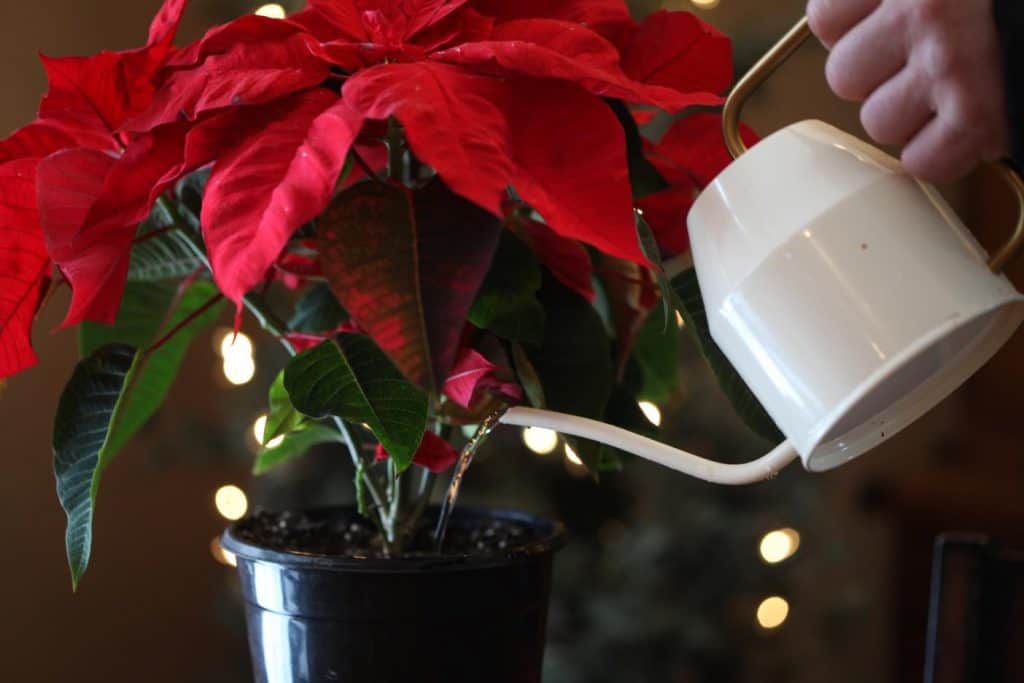
Do Poinsettias Like To Be Misted?
Poinsettias are tropical plants that like bright light and warmth. However if the environment is too warm and dry, they may suffer from the same symptoms as under watering.
In a dry environment:
- Misting the leaves once in a while with a spray bottle will help to provide some humidity for the plant.
- Another option for a dry environment is to place the pot on top of a pebble tray to allow the water to evaporate from the tray into the air underneath the plant.
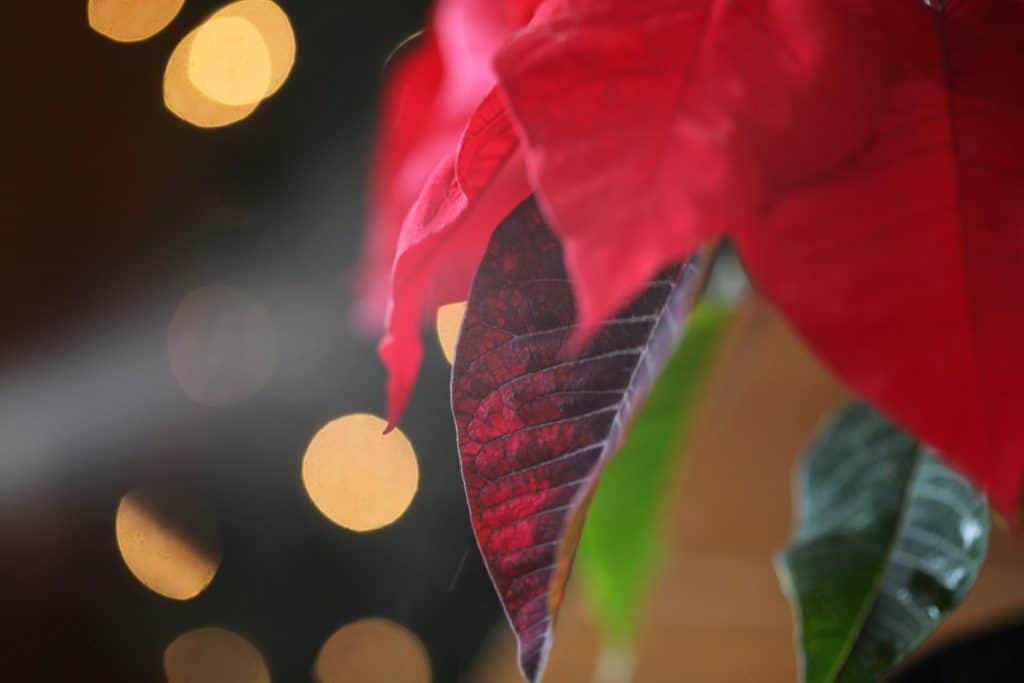
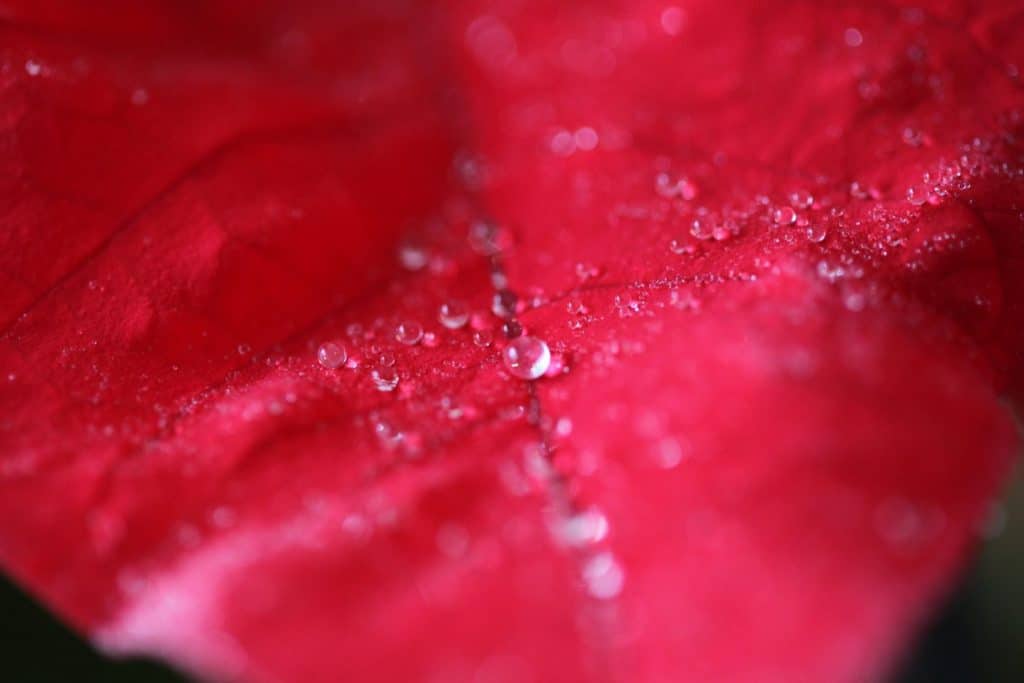
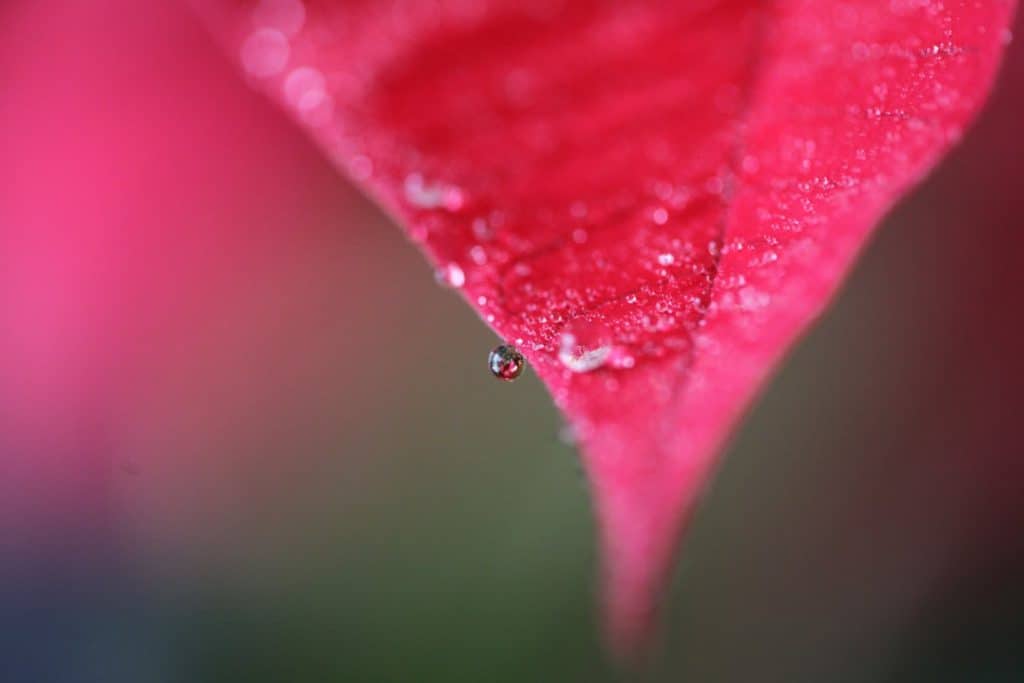
Do You Water Poinsettias From The Top Or Bottom?
You can water your poinsettia from the top or the bottom, however watering from the top is likely the easiest and the best way, and also the quickest method.
There is no real reason to water from below unless that is your personal preference.
The plants that I generally bottom water are those that have leaves that do not tolerate moisture, as well as young seedlings that are just establishing roots.
To water poinsettias I will use a watering can, and deeply soak the pot of soil from above, allowing the water to pour through the pot.
When the pot has finished draining I pour out the water from the drainage container, as it is very important not to let the poinsettia pot remain sitting in water that has been drained off.
If left sitting in the water, you are risking over watering.
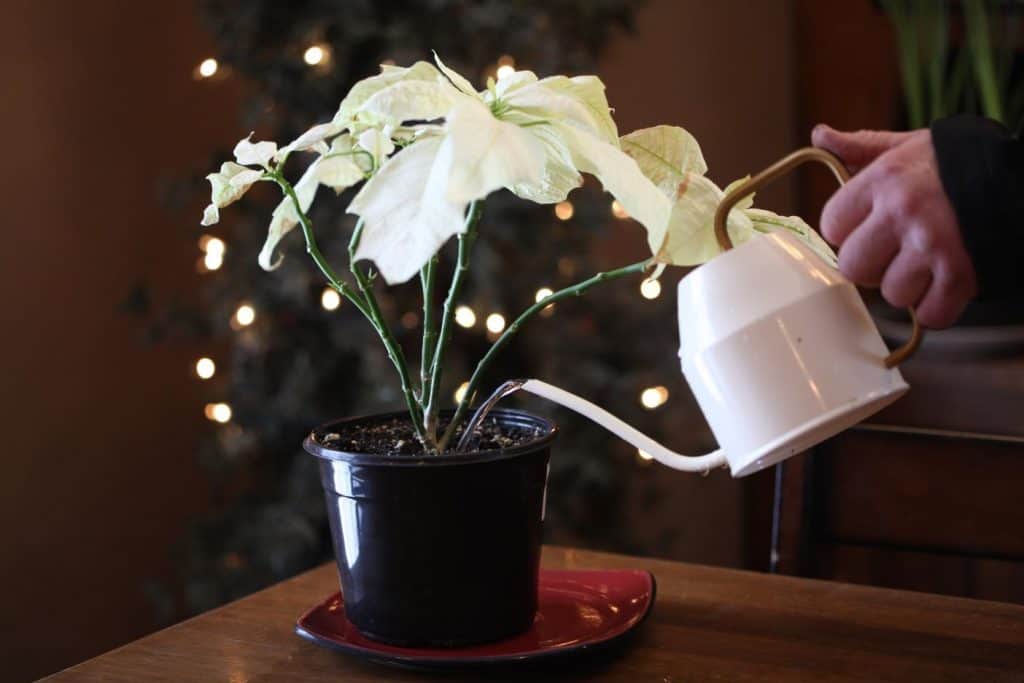
Why Are The Leaves Of My Poinsettia Falling Off?
When there is premature loss of leaves from a poinsettia, this is an indication of stress, generally from the environment in which it is growing and the care that it receives.
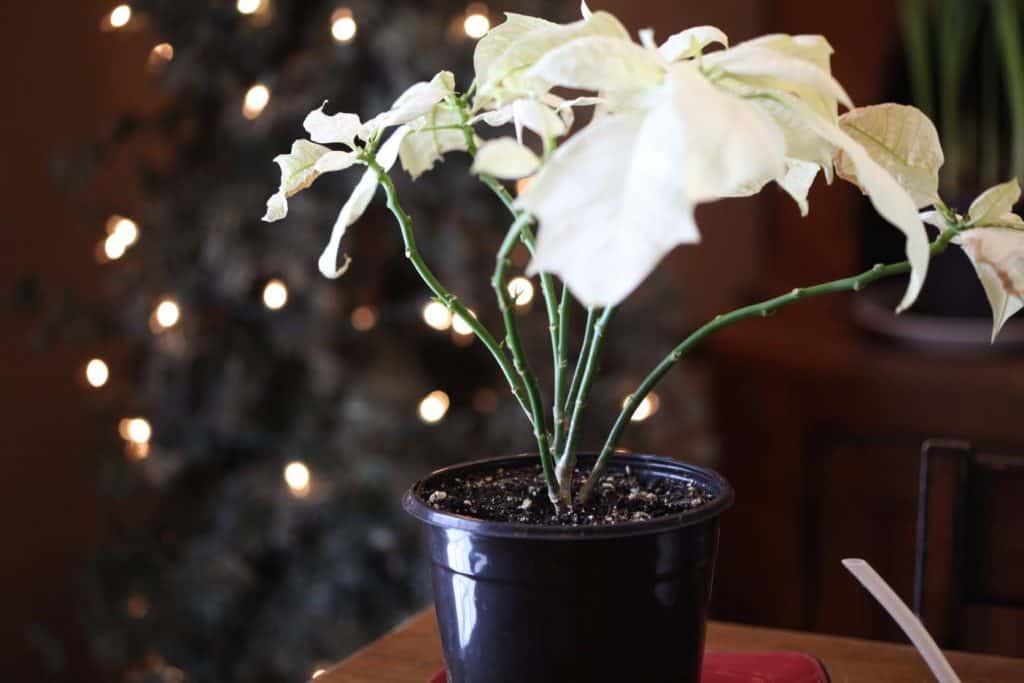
Consider the ideal environment of the plant, and provide what it needs. By providing for the poinsettia plant needs, the plant will be less apt to become stressed and will maintain the beautiful leaf color and colored bracts.
Poinsettias like a warm environment with lots of sunlight during the day, at least six to eight hours if possible. The ideal temperature is room temperature, at 68°F or 20°C during the daytime, with nighttime temperature being a little cooler.
Try to avoid placing the poinsettia in areas where there are significant temperature fluctuations, such as near a heat source or a drafty doorway.
Poinsettias like a sunny location, but will also do well in indirect sunlight close to a sunny window.
Water once per week when the soil is dry on the surface, and do not allow to stay dry for too long in between waterings.
If the leaves begin to curl, they may have gotten too cold. Keep this in mind, especially when transporting outside in winter.
Resulting injury to the leaves in this case occurs along the leaf edges, similar to leaf wilt injury.
If you identify the needs of your poinsettia, and meet it's watering, light, and temperature needs, it should bounce back from the stress, replacing the dead leaves with new growth and tiny green leaves.
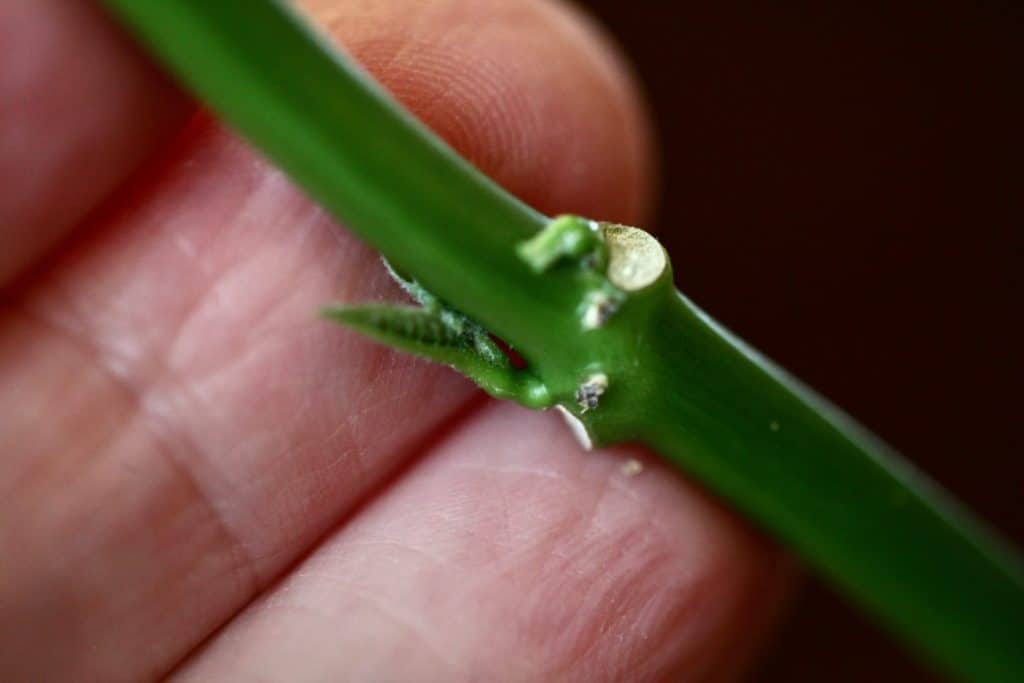
Conclusion
We love to grow Poinsettia during the Christmas season, along with other festive plants such as Christmas Cactus, Paper Whites, Amaryllis, and Wintergreen.
The colorful bracts add a festive pop of color to holiday decor.
This popular holiday plant can also be grown on through the winter months, long past the winter holidays, if we learn to meet it's growing needs. In fact you can even get the poinsettia to rebloom the next holiday season, using the right techniques.
Taking care of your poinsettias watering needs is pretty simple, once you are aware of what your plant will require to stay healthy and beautiful.
You can keep your poinsettia for many years if you meet it's needs and don't give it too much love, like I did with my beautiful large plant.
Water the plant regularly, although not too frequently. Allow your plant to guide you about when it's time to water again.
There is a poinsettia here in our province that has been grown successfully for many years now by it's owner. The story is bittersweet, although heartwarming and also a loving tribute to someone special. You can read about this special poinsettia here.
These popular plants can have a long life, and if well cared for they can live long past the holiday season. Who knows, if they survive past the new year and grow on as house plants, they may bloom again next Christmas season.

Have you ever wondered how to water a poinsettia, or struggled to keep your Christmas poinsettia plant happy and healthy? Have you over watered or under watered your plants? Make sure to leave a comment below to share your experience!
OTHER POSTS YOU MAY LIKE:
PIN IT FOR LATER!
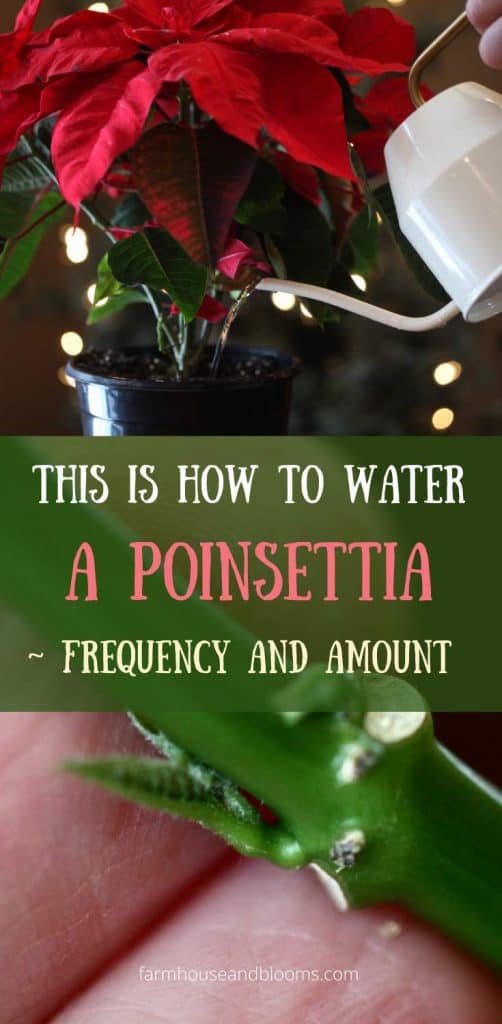
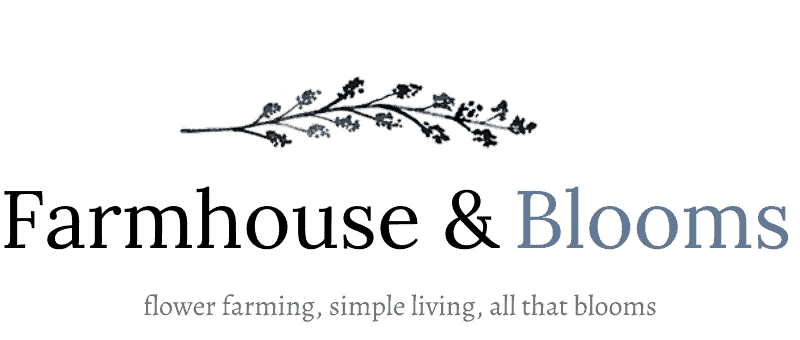

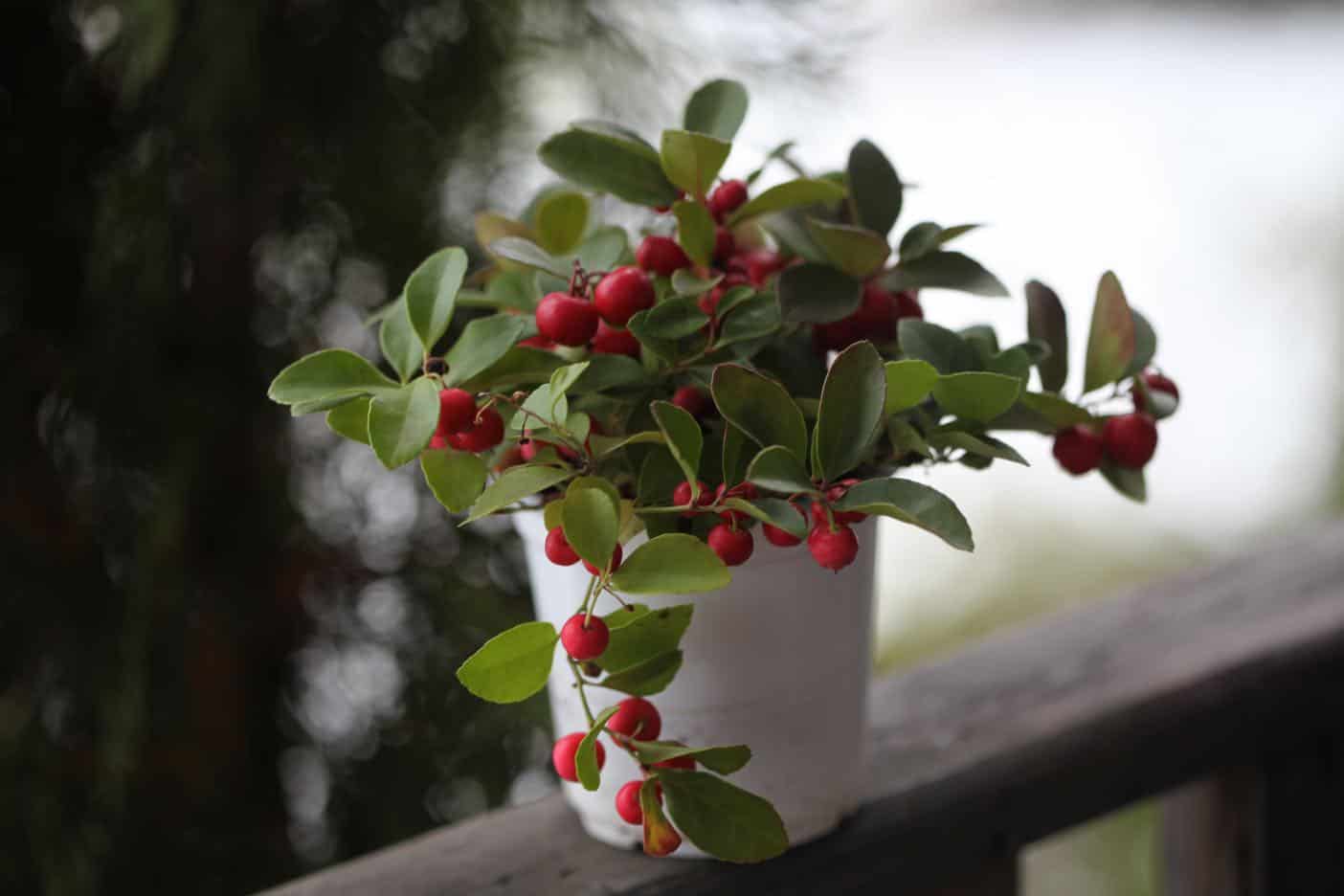
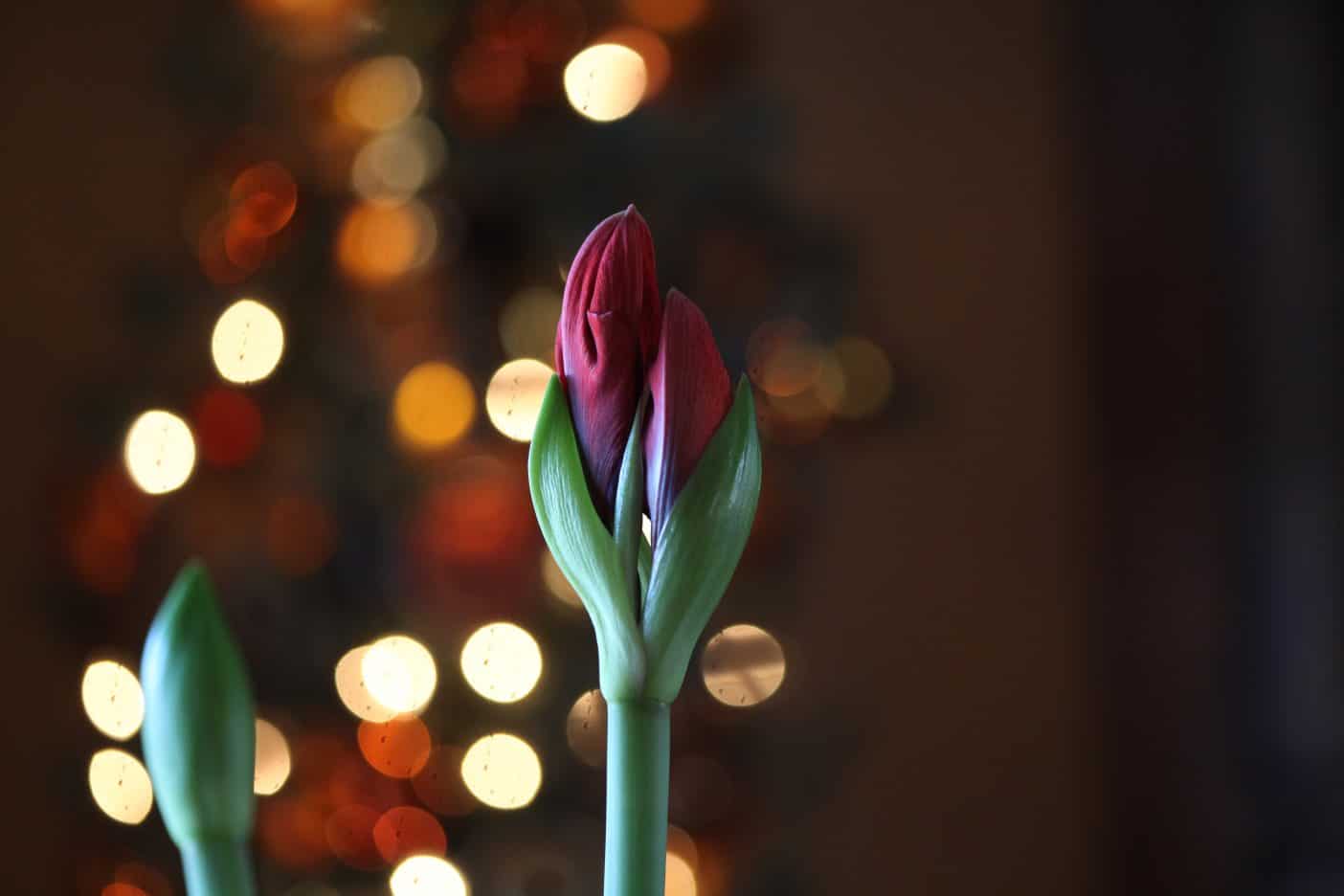
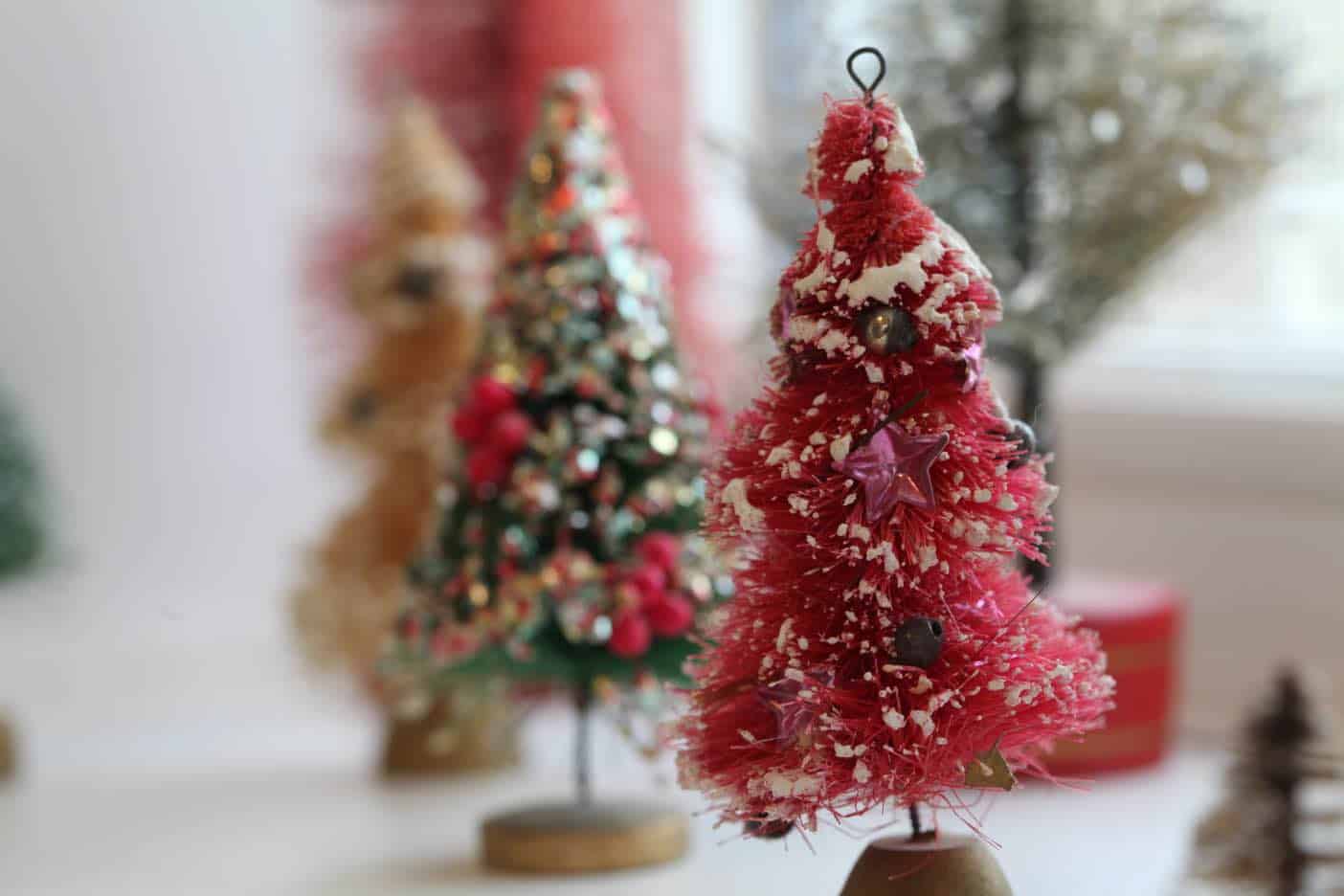
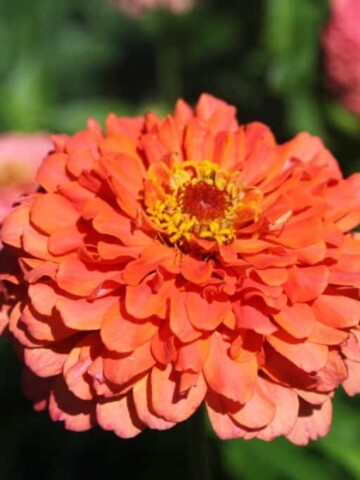
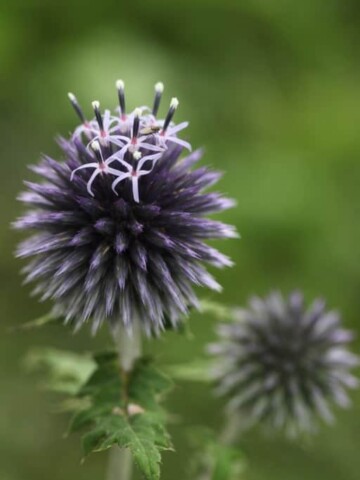
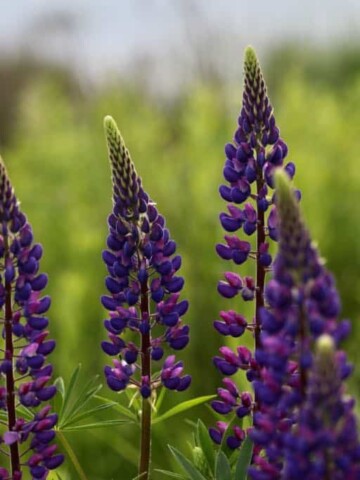
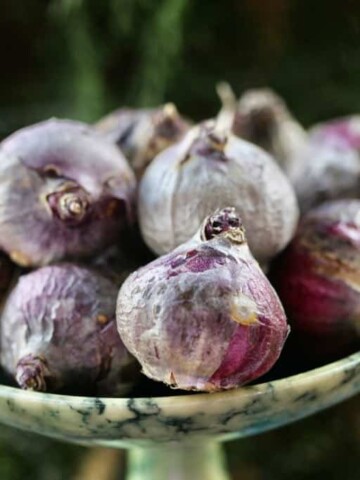
Stacey S.
I planted poinsettia seeds seeds yesterday in a pot . do you water just once a week or whenever the soil gets dry?
Cheyanne Mullin
Hi Stacey, I've not yet planted poinsettia seeds, but would certainly like to! Watering seeds is different than watering a plant. It's important not to let your seeds dry out while they are germinating, so make sure that they stay moist, but also well drained. Good luck with your seedlings!